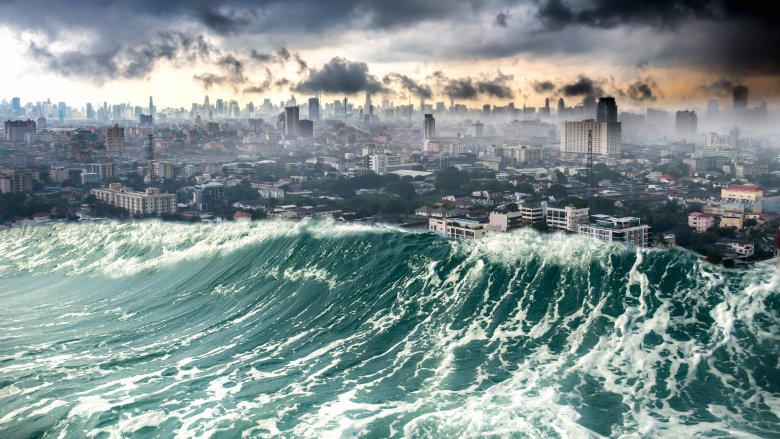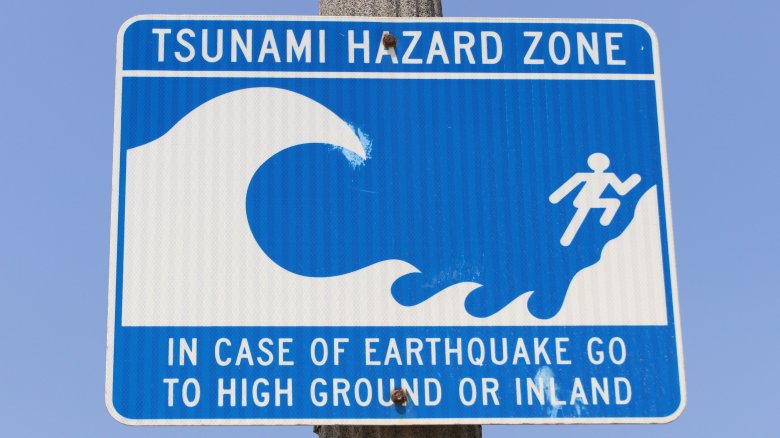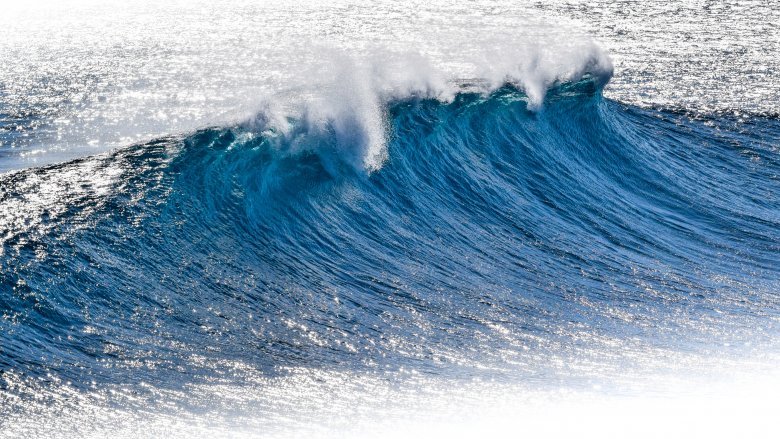What Would Really Happen If A Tsunami Hit California?
Nature throws a lot of terrifying things at us — earthquakes, hurricanes, tornadoes, and actual plagues of locusts, which as it turns out is not just something that may or may not have happened during biblical times. Who knew? One of the most terrifying of all of nature's terrors, though, is the tsunami — it strikes with very little warning, it moves really fast, and it can completely erase all life and civilization in its path. But hey, at least Americans can rest easy because it will never happen here. Except it will ... and it's only a matter of time.
California (naturally) is likely to be ground zero for a tsunami at some point in the near future. Okay but where? California is a big state. According to NPR affiliate KQED, it probably wouldn't happen in the San Francisco Bay Area, despite what we've all heard from Hollywood. That's because the faults in the Bay Area aren't the kind that cause tsunamis. A tsunami happens when two tectonic plates slide under each other, but one of them gets stuck. The pressure builds, the plate slips, and a tsunami wipes out half the coastal population.
It's not the part of California you think that needs to be worried about a tsunami
The major fault in the San Francisco area, though, is the San Andreas, which is a slip-strike fault. With this type of fault, the plates slide horizontally past each other, but because there's no subduction there's also no displaced ocean water, and it's the displaced ocean water that causes the tsunami. Southern California doesn't have the right kinds of faults, either, as far as researchers can tell. So the most likely place for a tsunami to happen is actually on the north Pacific coast, in the Cascadia subduction zone. In 1700, there was an earthquake in that fault that created a tsunami that went all the way to some coastal villages in Japan. So, crap.
California will be in serious trouble after a tsunami
According to the New Yorker, there's no early warning system in the Pacific Northwest, so when the earthquake starts, no one will be ready for it. The electrical grid will likely fail almost immediately, which will extra-suck if the earthquake happens at night. People will have to flee their homes on foot, too, and they'll have roughly 10 to 30 minutes to do it. Thousands won't make it. The wave will travel inland at roughly 13 to 14 miles per hour, with a varying height of between 20 and 100 feet, and it will bring not only water but the remains of all the forests, neighborhoods, and parking lots it encounters during its journey inland. By some estimates, people in the area will need to be at least two miles inland or 100 feet above sea level to be safe, though it's worth noting that Japan's tsunami traveled around six miles inland.
The after-effects of the tsunami will be felt for years. Just outside the induction zone, electricity may take three months to return, it might take up to a year before residents will have water or sewage service. Highways won't be in working order for another six months, hospitals won't return for 18 months. That number increases the closer you are to the coast. The inundation zone itself, of course, will be uninhabitable for many years, and frankly, people should really stay the heck out of there forever and ever because crap. If you're going to vacation in the Pacific Northwest, maybe stay two miles inland and observe the beaches on Google Earth. And definitely, definitely, don't live there.


